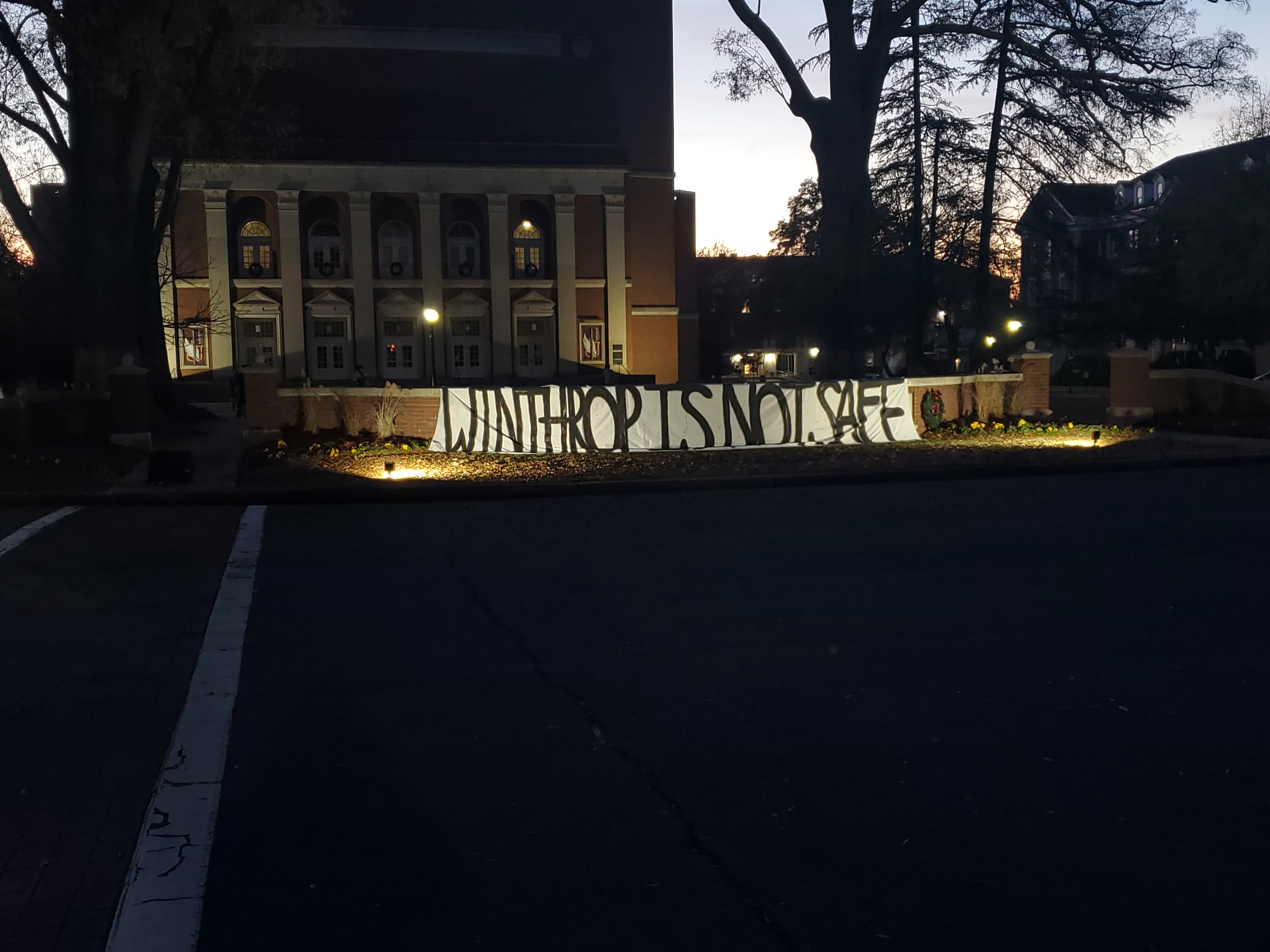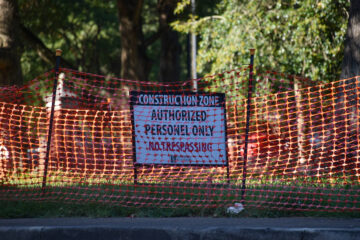The removal of mold from residence halls, accessibility improvements, increased funding for the Office of Victim’s Assistance, the removal of controversial figures’ names from campus buildings and increased campus security measures were among the demands made by two student-led protests at the end of the fall semester.
The first and largest protest, organized by student organization WU Students for Change, took place on Dec. 3, the same day and time as the annual Rock Hill Christmas Parade passed by campus.
“The reason why we wanted to do it during the Christmas parade was to let the community know that we’re upset with what we are given here on campus,” Grayce Kellam, protest coordinator for WU Students for Change and senior fine arts major, said. “It was going to be not-your-typical protest. We were just going to hold signs that were abbreviated, so that they were PG.”
The protest was planned to be held on the sidewalk in front of the president’s house. However, according to an email sent to all students on Dec. 2 from Assistant Chief of Police Charles Yearta and Vice President for Student Affairs Shelia Burkhalter, the protest could not happen in that area due to a permit from the City of Rock Hill for the Christmas parade.
WU Students for Change said in an Instagram story they requested to simply move off of the sidewalk and onto campus behind the fence, complying with the city’s permit but still being near the originally planned location, but was denied by Winthrop’s administration and forced to move the protest in front of Byrnes Auditorium, one of the four designated free-speech zones on campus.
In a later post, WU Students for Change indicated they submitted a request for assistance to the American Civil Liberties Union of South Carolina.
“While we understood why we had to move from the sidewalk to campus and were happy to comply with that request, forcing us into a small designated area on campus is a violation of our free speech rights,” the post reads.
For a full list of demands, which includes concerns around the handling of sexual assualt and Title IX cases, Americans with Disabilities Act compliance, diversity, campus safety and living conditions, search WUStudentsforChange on Instagram or go to chng.it/RDyTLsgR.
“The original list of demands that came out when the organization was founded was largely focused on Title IX only,” Ainsley McCarthy, WU Students for Change executive board member and sophomore mass communication major, said. “And, obviously, we don’t want to just focus on Title IX, there’s a lot more that goes into campus safety. So a lot of the new ones that have to do with accessibility and diversity are new to this semester.”
The second and smaller protest took place on Dec. 7 and also began in front of Byrnes Auditorium, but marched to Tillman Hall and into the president’s office, where a list of demands and a petition was delivered.
The petition, which included complaints similar to the WU Students for Change list of demands, had over 70 handwritten signatures.
“The synopsis was, we don’t want to be on a campus in which we are unsafe either health-wise, physically with the sexual assault that was happening, accessabiltiy-wise with broken sidewalks, steep ramps, that kind of stuff,” freshman history major and protest organizer Carter Bentley said.
Police were called to the scene as the protestors entered Tillman Hall, but according to Yearta, it was only for a noise complaint.
“So when they [the protestors] started coming into Tillman, individuals who worked in Tillman, not in the president’s office, called us saying ‘There’s someone yelling in Tillman,’ which is why our officers responded. But once we got there, the group was already talking to the president’s office, and nobody was yelling,” Yearta said.
Unlike the first protest, the organizer was a single person, not an organization.
“I just wanted to do a one-off protest. I would do more if need be. But this wasn’t supposed to get traction from the clubs,” Bently said. “Like, it’s great to have club help. But the way that it turned out was more like, ‘This is my protest, co-signed by all these other clubs that were not supposed to involve themselves in it.’”
Yearta said that as long as protests remain peaceful, he and everyone else at Winthrop Police actually encourage student protests.
“With all due respect, we expect you to protest, you know, that’s part of the learning and growing aspect. So, without an underlying threat or underlying situation that we are made aware of, usually we’re very off hands,” Yearta said. “Peaceful protest is good. And that is how change occurs in our country.”




